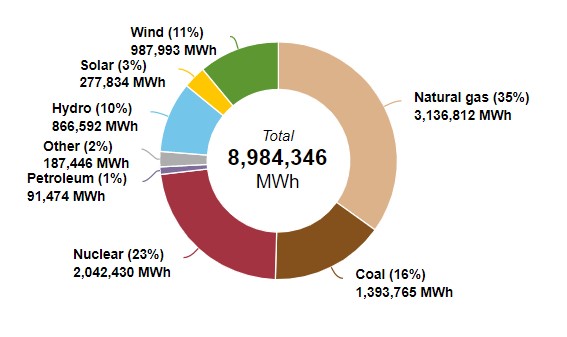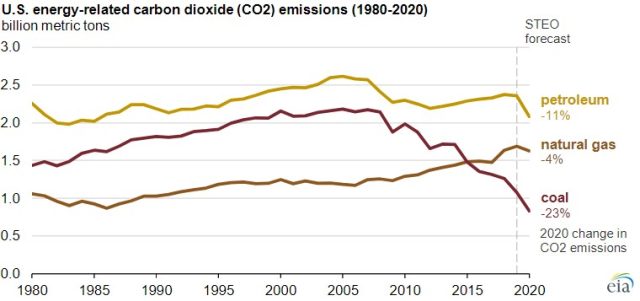
The US electrical grid is in the middle of a remarkable streak that is partly the story of the rise of renewables, partly the decline of coal, and partly the pervasive repercussions of COVID-19. And the US Energy Information Administration’s latest projections suggest it’s more than just a spring curiosity.
According to the EIA’s daily data summaries, wind, solar, and hydroelectric power plants have combined to produce more electricity than coal every single day since March 24. (These numbers don’t include rooftop solar generation, but its inclusion certainly wouldn't change the streak.) Natural gas remains the largest source of generation, while nuclear’s contribution was similar to renewables.

Renewable generation ticked upward over this time period while coal plants were dialed down. April also typically sees low demand for electricity, and the pandemic has decreased demand even more. But EIA’s latest “Short-Term Energy Outlook” projects that renewables will out-produce coal for 2020 as a whole—a first. They also expect that coal will bounce back very slightly in 2021 but at the expense of natural gas production, as slowed US gas production is expected to drive its price up. But even with a bit more coal use, the projection has renewables topping coal next year, too.

Such projections are obviously extremely uncertain, given that they depend on how a global pandemic plays out—including its effects on the economy, activity in commercial spaces, and even planned construction of new power plants. But it shows just how far coal generation has fallen over the last few years, while installed wind and solar capacity has steadily grown.
Also this week, the EIA released an updated projection for total US energy-related CO2 emissions for 2020. In April, the estimate was a 7.5 percent drop in emissions, but that projection has now grown to 11 percent. That goes beyond an estimated drop of five percent in both GDP and electrical demand. This is partly because they see an even bigger impact on petroleum consumption for transportation—despite low gas prices. But coal’s precipitous decline is certainly a notable contributor to the declining emissions, with a projected 23 percent decrease in coal-burning emissions.

The emissions reduction, like those we've seen in past economic downturns, is expected to be temporary. But the size of the rebound will depend on the long-term trends toward cleaner energy, as well as the pace of economic recovery. It’s even possible that countries will emerge from the pandemic with some systemic changes that make energy use in 2022 look a bit different than the world of 2019.
reader comments
245